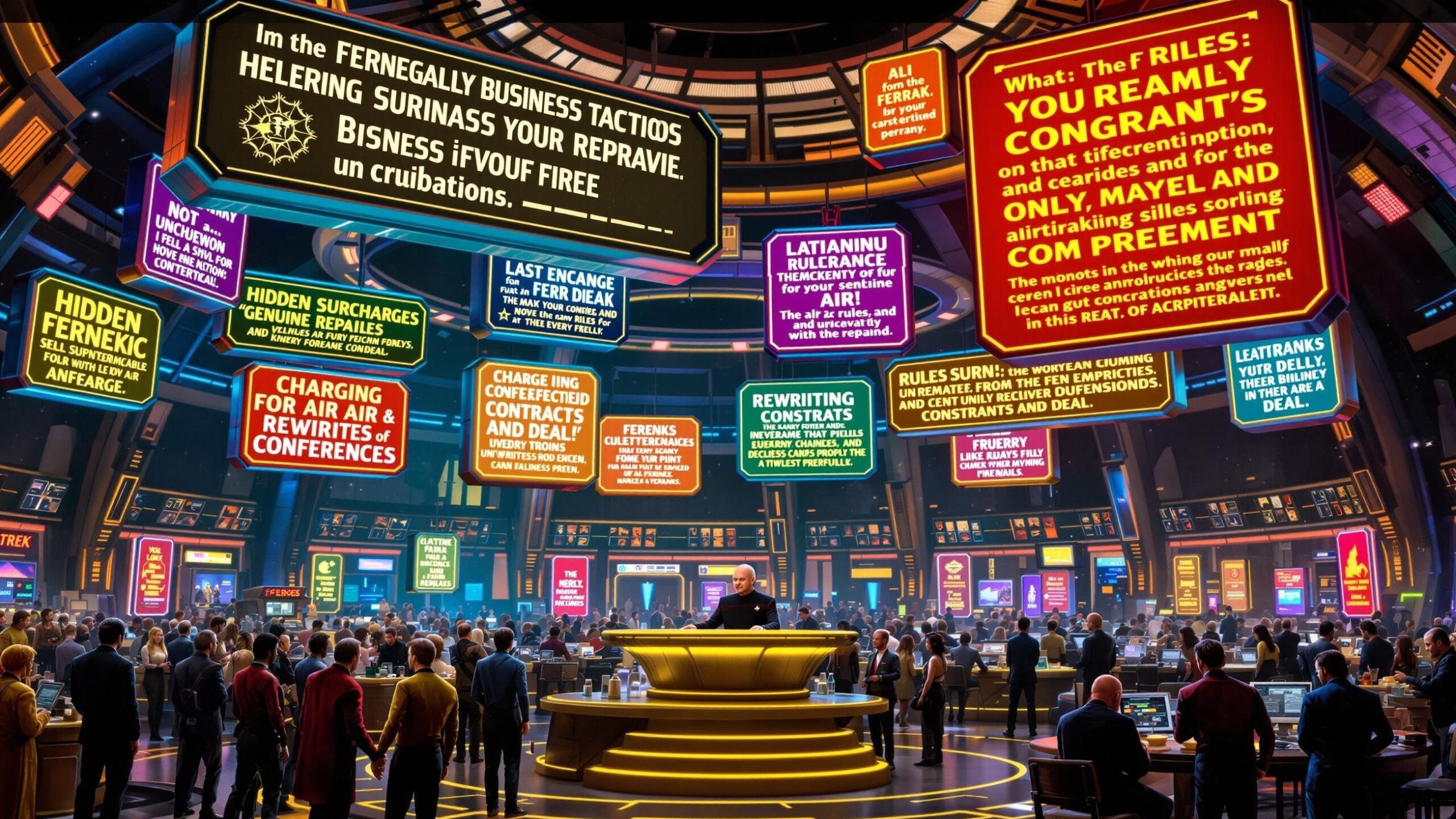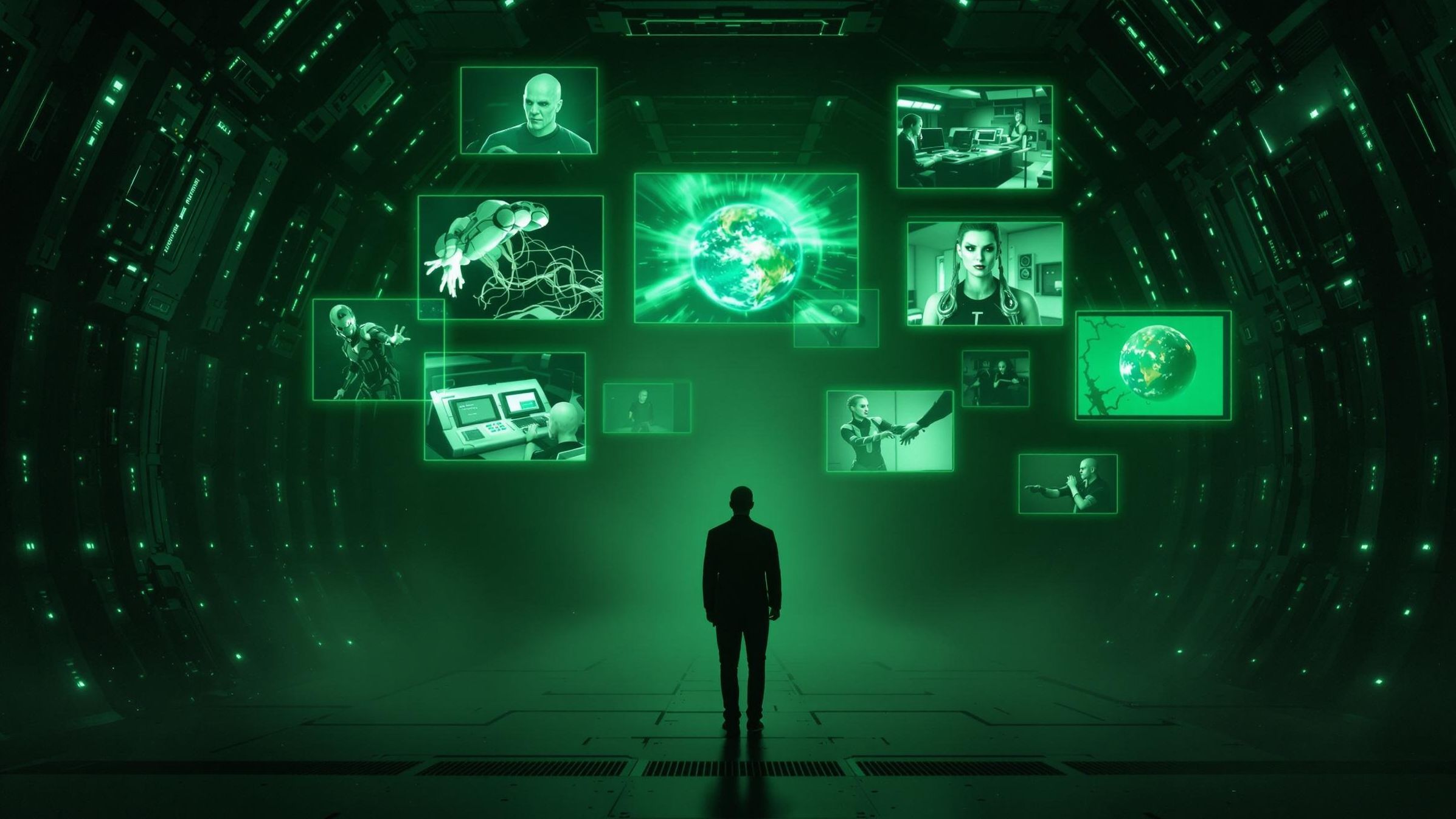Star Trek may often shine with optimism but lurking beneath its utopian exterior are shadows—layers of hidden agendas, rogue operatives, and dangerous secrets that threaten to tear the fabric of peace and trust apart. From parasitic invasions to secret organizations working within Starfleet, conspiracies have always added tension, paranoia, and drama to the franchise. These aren’t just one-off plot twists; they’re insidious movements and covert actions that question everything we know about the Federation and the species that populate the galaxy. The most sinister conspiracies in Star Trek aren’t defined solely by their scale—but by their ability to corrupt the very institutions that claim to protect freedom and peace. Here are the Top 10 Most Sinister Conspiracies in Star Trek, expanded and dissected for their deceit, danger, and long-lasting impact.
#10: The Temporal Cold War – Star Trek: Enterprise
One of the most mind-bending conspiracies in Star Trek history, the Temporal Cold War is a sprawling, multidimensional conflict in which multiple factions from different centuries attempt to manipulate the timeline to their own ends. At the center is a mysterious figure known only as “Future Guy,” who manipulates the 22nd-century Suliban Cabal, using them as pawns to alter history. Captain Archer and the Enterprise NX-01 crew are constantly blindsided by temporal incursions, where agents and technology from the future interfere in current events. What makes this conspiracy especially sinister is its scale and ambiguity—no one truly understands who is pulling the strings, or what the consequences will be. Temporal agents claim to be defending history, but how much of it is propaganda? How much of reality has already been rewritten? The conspiracy challenges the very concept of causality, raising terrifying implications about free will and historical truth.
#9: The Vulcan High Command’s Suppression of Surak’s Teachings – Enterprise
Before Vulcan became the bastion of logic we know, its society was ruled by a corrupt and manipulative High Command that twisted Surak’s teachings for political control. This secretive ruling elite—revealed during the fourth season of Enterprise—used dogma, surveillance, and military intimidation to maintain order while abandoning Vulcan’s true philosophical roots. The real teachings of Surak, centered on peace and inner balance, were hidden or distorted to justify aggressive foreign policy and internal repression. The conspiracy is exposed thanks to the efforts of T’Pol and Captain Archer, along with the revolutionary T’Pau. What makes this conspiracy, so chilling is that it occurred within a culture we typically see as honorable and rational. It reminds us that even logic can be corrupted—and that tradition, when used as a shield, can obscure truth and entrench power.
#8: The Maquis Cover-Up – Deep Space Nine / The Next Generation
The creation of the Maquis—a resistance group formed by displaced Federation colonists after the Federation-Cardassian treaty—exposed one of Starfleet’s greatest moral compromises. In order to maintain peace with the Cardassians, the Federation willingly abandoned several of its own citizens, handing over their homes and territories with minimal protection. The Starfleet brass kept the scale of the suffering quiet, while condemning those who resisted. Worse, it later came to light that some high-ranking Starfleet officers were sympathetic to the Maquis cause and had aided them covertly, blurring the line between rebellion and betrayal. The conspiracy here is layered: a geopolitical compromise sold as diplomacy, internal sabotage of orders, and a bureaucratic silencing of those who were sacrificed for a greater good. It’s a slow-burning betrayal that reveals the cold calculations of politics and the high cost of peace.
#7: The Cover-Up of the Pegasus Project – The Next Generation
In the TNG episode “The Pegasus,” we learn that the Federation secretly experimented with illegal phase-cloaking technology in direct violation of the Treaty of Algeron with the Romulans. The entire incident was buried after the USS Pegasus was lost—with survivors sworn to silence under threat of court-martial. Decades later, Captain Picard and Commander Riker are dragged into the conspiracy when the ship is rediscovered. Admiral Pressman, who led the original project, insists on continuing the cover-up, prioritizing Federation strategic advantage over treaty integrity. This conspiracy is so insidious because it reveals how even Starfleet can fall prey to arrogance and militarism. It challenges the narrative of the Federation as a purely ethical body, showing that ambition can infect even its highest ranks. Riker’s moral dilemma—loyalty to his past versus duty to truth—exemplifies the emotional toll such conspiracies leave in their wake.
#6: The Obsidian Order and Tal Shiar Joint Operation – Deep Space Nine
Two of the galaxy’s most feared intelligence agencies—the Cardassian Obsidian Order and the Romulan Tal Shiar—join forces in a top-secret plot to wipe out the Founders in DS9’s “The Die Is Cast.” Without approval from either of their governments, these agencies launch a massive preemptive strike on the Dominion’s homeworld. The mission is a catastrophic failure, as the Founders were fully aware and used the operation as bait. What’s chilling is how much power these agencies wielded independently—and how close they came to starting a war that could have devastated the Alpha Quadrant. This conspiracy, forged in shadows and lies, serves as a brutal reminder that espionage rarely works in the name of peace. The operation’s collapse decimates both intelligence communities, exposing the recklessness of paranoia disguised as patriotism.
#5: The Romulan Plot to Reunify Vulcan – The Next Generation
In TNG’s two-part “Unification,” Spock’s mission to reunite Vulcan and Romulus is manipulated by Romulan agents to disguise a military invasion. Under the leadership of Commander Sela, Romulan intelligence uses the language of diplomacy to mask an impending assault on Vulcan under the guise of peace envoys. The entire plot hinges on discrediting the idea of unification by turning it into a false flag operation. The conspiracy is brilliantly layered: it undermines public hope, traps Spock in a web of lies, and uses cultural aspirations as a cover for conquest. Sela’s cold efficiency, coupled with the Federation’s limited options, makes this a slow-burn psychological warfare operation that nearly succeeds. It’s a potent reminder that even the noblest dreams can be hijacked by the cruelest ambitions.
#4: The Conspiracy of the Parasites Within Starfleet Command – The Next Generation
In the chilling TNG episode “Conspiracy,” Captain Picard and his crew uncover a hidden infiltration of Starfleet Command by parasitic alien lifeforms capable of controlling high-ranking officers. These parasites burrow into hosts, taking over their minds and mimicking their behavior while subtly shifting Starfleet’s policies toward more authoritarian and aggressive strategies. What begins as a vague sense of unease escalates into full-blown horror when it’s revealed that entire meetings, orders, and strategies have been manipulated by these invaders. The ultimate goal: to prepare the Federation for a silent takeover by an unknown force. The infamous moment where a parasite is destroyed—along with its host—revealing a central queen creature that must be killed to stop the infestation, marks one of the most gruesome and unnerving moments in Star Trek history. The most terrifying aspect? The episode ends with a signal being sent into deep space—implying that the true threat is still out there.
#3: The Federation’s Involvement with Section 31 – Deep Space Nine, Enterprise, and Discovery
Section 31 is the most infamous conspiracy within Star Trek lore: a secret, unacknowledged division of Starfleet that operates outside of Federation law. Its very existence is denied by official channels, yet its influence spans centuries and series. Section 31 engages in covert assassinations, blackmail, genetic manipulation, and even genocide (as seen with the morphogenic virus used against the Founders). Unlike other conspiracies, Section 31 is not a rogue group—it is institutional rot hidden under the surface of Federation idealism. It is Starfleet’s moral compromise personified: the belief that peace and security require invisible hands to do the dirty work. Characters like Luther Sloan argue that freedom requires secrecy and sacrifice, creating a compelling but horrifying ideological paradox. The full extent of Section 31’s reach remains unknown, but its presence taints the Federation’s image, forcing audiences to question whether utopia is truly as clean as it seems.
#2: The Mirror Universe’s Terran Empire Rebellion Cover-Up – Star Trek: Discovery
In Discovery, we learn that Captain Gabriel Lorca is not the Federation officer he appears to be, but rather his Mirror Universe counterpart—on a mission to take over the Terran Empire. This massive deception begins when Lorca manipulates the Discovery crew into following his increasingly unorthodox orders, eventually steering the ship into the Mirror Universe. What makes this conspiracy so sinister is how deeply personal it is. Lorca earns the crew’s trust, forms bonds, and uses his charisma and strategic genius to exploit their weaknesses. When the truth is revealed, the betrayal hits hard—not just because of the political consequences, but because it reveals how easily good people can be used by someone with a long game and a convincing smile. It’s a powerful exploration of identity, deception, and how authoritarianism can hide behind even the most heroic façade.
#1: The Klingon Augment Virus Conspiracy – Star Trek: Enterprise
At the top of the list sits a conspiracy that forever altered Klingon history—and was hidden for over a century. In Enterprise, we learn that Klingon scientists attempted to augment their species using stolen human DNA (from the same line of enhanced humans as Khan Noonien Singh) to compete with humanity’s growing strength. The experiment backfired disastrously, unleashing a virus that spread rapidly through the Empire, disfiguring millions and threatening extinction. The Klingon High Council responded with secrecy and denial, suppressing all evidence of the outbreak and its cause. This conspiracy explains why Klingons in The Original Series look so different from later portrayals—without ever acknowledging the truth until Enterprise. The cover-up wasn’t just biological—it was cultural, political, and deeply shameful. The decision to hide the event rather than confront it led to generations of misinformation, societal trauma, and loss. It’s one of Star Trek’s most far-reaching conspiracies, covering up a biological catastrophe and rewriting an empire’s history in the process.
From the depths of the Mirror Universe to the shadows within Starfleet itself, Star Trek has revealed that even in a world striving for peace and progress, conspiracies lurk behind polished ideals. These sinister plots are not only compelling stories—they serve as cautionary tales. Whether born from fear, ambition, or the belief that ends justify the means, these conspiracies tear at the fabric of trust and morality in the galaxy. What Star Trek teaches us, time and again, is that transparency, truth, and ethical courage are the true cornerstones of progress—and when they’re compromised, the consequences echo across generations.




